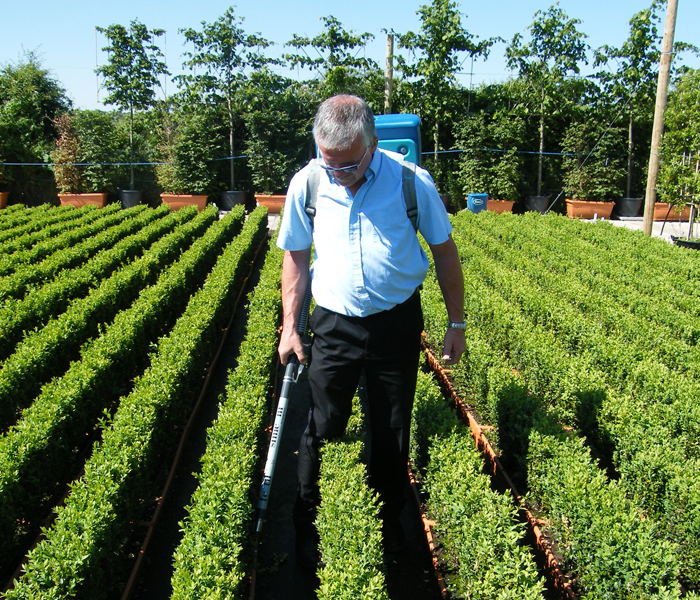If you are wondering what to do with any tired hardy nursery stock and herbaceous plants, our experienced technical area sales manager Steve Hughes runs through the options.
It’s that time of year when many growers are looking at overwintered hardy nursery stock and herbaceous plants. Plants that tend to have been on site far too long, either on growing beds batched up together, or tucked away in the corner of a garden centre site. While we’re not quite into spring, these plants tend to be very slow to start growing and therefore not that tempting for customers.
So what are the choices? We could repot, but this can be costly and larger pots will take up even more space at a time when it is at a premium. We could simply throw them in a skip and make room for fresh new stock – although not good for wastage levels! Alternatively there is the option to apply a topdress product to kick start growth and improve salability. However, as with all fertilizers it’s important to pick the right type of product, here I discuss some of the options available:
Low cost agricultural type fertilizers are available, however, there are drawbacks. Predominantly soluble, they can leach or even scorch the plant roots. As such, albeit cheap, they are not really cost effective or efficient as the result is short lived.
Liquid feeds are not recommended for this time of year, as plants are already generally too wet and cold roots will not utilize nutrients efficiently. Again, there may be leaching issues or conductivity build-up leading to root scorch from the many applications required to green up plants.
Slower release agricultural or turf fertilizers are available, but not designed for potted ornamentals, particularly if grown under protection where ammonium nitrogen can volatilize and scorch leaves. The slow release pattern is uncontrolled, mostly in the first few weeks with little left after10-12 weeks so, by late spring, you are likely to have to reapply. While cheaper to buy than a controlled release option, the green up effect and longevity is not as good, and the extra product and labour costs in re application out way any initial savings.
Using a mini prill controlled release fertilizer can be effective, delivering the nutrients as required by the plants. High potassium ratios in Osmocote Start and Osmocote Bloom will give compact growth for up to 3 months and a balanced Analysis in Osmocote Exact Mini will give balanced growth for up to 6 months.
Controlled release fertilizer tablets are another useful option that many growers have used. Again, the correct nutrient ratio can be chosen for the plants and will be delivered in an effective way. Supplied as either 5g or 7.5g tablets they can be applied without having to measure the dose. However on large areas it can be quite labour intensive applying one or more tablets to every pot.
Application of granular products can be more efficient with a backpack applicator such as the Fertil. However, there is a risk the granules will simply roll off the top of the growing media, particularly if the pot tips over in windy winter conditions. This clearly leads to wasted product and time.

Steve Hughes applying granular topdress fertilizer with a backpack
Then to the final option, a sticky topdress. In my opinion by the far the best is to use Osmocote Topdress FT, with a 4-5month release pattern. This controlled release NPK fertilizer also contains a very small amount of ‘quick release’ feed to kick-start your plants plus trace elements to help ward off deficiencies. With Fusion Technology (FT), the granules stick to the growing media surface. Within a week of applying, the granules take up sufficient moisture to become sticky - so they won’t simply roll off and be wasted, even if the pot tips over.
Application rates for Osmocote Topdress FT vary according to pot size (see guide). Comprehensively tested, it has been shown to be very safe when used correctly. Many growers in my region already routinely apply it to stock carried over the winter with great results.
So, if you are looking to give your overwintered nursery stock and herbaceous plants a boost, and kick start spring sales, speak to your technical area sales manager now in order to discuss the available options.
